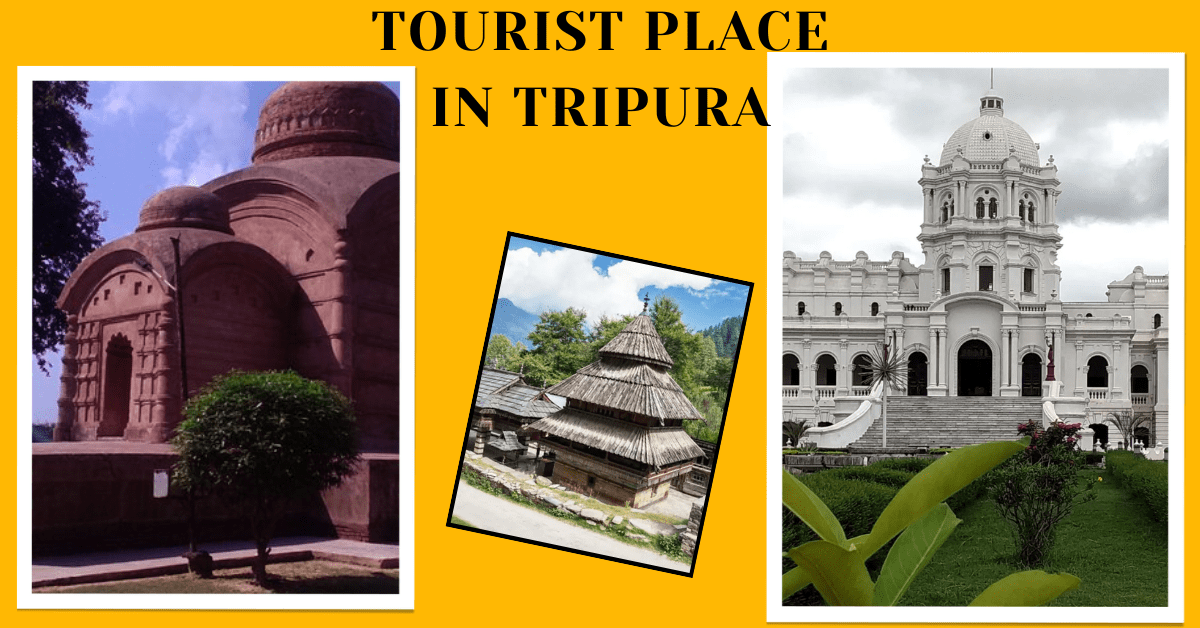Nestled in the northeastern part of India, Tripura is a state with a rich tapestry of culture, history, and natural beauty. The top tourist places in Tripura not only showcase the region’s unique offerings but also play a pivotal role in shaping the societal narrative. In this blog post, we will embark on a journey through the best and famous tourist places in Tripura, exploring their relevance, evolution, and potential future developments, and how they contribute to the vibrant tapestry of this northeastern gem.

Relevance and Cultural Significance:
- Ujjayanta Palace: Ujjayanta Palace, with its architectural grandeur, is more than just a royal residence; it’s a cultural symbol. The relevance of Ujjayanta Palace lies in its role as a repository of Tripura’s history and a testament to the regality of the region.
- Neermahal: Neermahal, the “Water Palace,” is not just a historic structure; it’s a cultural jewel. The relevance of Neermahal lies in its role as a symbol of architectural brilliance, showcasing the cultural fusion of Tripura.
- Tripura Sundari Temple: Tripura Sundari Temple, a revered pilgrimage site, is more than just a place of worship; it’s a cultural and spiritual hub. The relevance of Tripura Sundari Temple lies in its role as a sacred place that epitomizes the religious diversity of the state.
- Evolution of Tourist Places:
- Sepahijala Wildlife Sanctuary: Sepahijala Wildlife Sanctuary has evolved from a natural retreat to a conservation hotspot. Its transformation aligns with Tripura’s dedication to preserving biodiversity and promoting eco-tourism.
- Unakoti: Unakoti, with its ancient rock carvings, has evolved from an archaeological site to a cultural heritage destination. Its transformation reflects the increasing interest in exploring Tripura’s historical and artistic legacy.
- Jampui Hills: Jampui Hills, known for its picturesque landscapes, has evolved from a tranquil escape to a destination for nature enthusiasts. Its transformation aligns with Tripura’s growing recognition as a haven for eco-conscious travelers.
- Impact on Society:
- Cultural Preservation: Ujjayanta Palace, Neermahal, and Tripura Sundari Temple contribute significantly to the preservation of cultural heritage. These landmarks serve as guardians of Tripura’s history, architecture, and religious traditions, fostering a sense of pride and identity among the local population.
- Economic Opportunities: The tourism industry in Tripura acts as a catalyst for economic opportunities. The popularity of tourist places like Sepahijala Wildlife Sanctuary and Jampui Hills supports local businesses, including hospitality, transportation, and artisanal crafts, creating job opportunities and contributing to the state’s economy.
- Educational Significance: Unakoti and other historical sites hold educational significance by providing insights into Tripura’s ancient history and artistic heritage. Visits to these places offer valuable lessons about the region’s cultural evolution and contribute to educational tourism.
- Potential Future Developments:
- Community-Based Tourism Initiatives: Future developments should prioritize community-based tourism initiatives. Engaging local communities in tourism-related activities, including cultural events, guided tours, and homestays, can enhance the visitor experience while ensuring the equitable distribution of economic benefits.
- Digital Integration for Cultural Narratives: Leveraging technology for tourism can enhance cultural narratives. Digital platforms, virtual tours, and interactive exhibits can provide a more immersive understanding of Tripura’s history, folklore, and cultural richness, making these experiences accessible to a wider audience.
- Sustainable Practices and Conservation Partnerships: Tripura’s commitment to sustainable practices should be further strengthened. Collaborating with conservation organizations and implementing eco-friendly initiatives can ensure the long-term preservation of natural sites and cultural landmarks.
- Conclusion:
Tripura’s best and famous tourist places are not just physical destinations; they are integral to the state’s cultural narrative, economic vitality, and environmental sustainability. As we traverse the halls of Ujjayanta Palace, marvel at the architectural beauty of Neermahal, or seek spiritual solace at Tripura Sundari Temple, it becomes evident that these landmarks are more than attractions—they are threads woven into the intricate fabric of Tripura’s societal identity. Looking ahead, sustainable practices, community involvement, and technological integration can further elevate Tripura as a cultural and ecological treasure trove, where tradition, progress, and nature coalesce seamlessly. Let us celebrate the diversity, cherish the narratives, and contribute to a legacy that continues to unfold in the enchanting landscapes of Tripura.

Best and Famous 37 Tourist Places List in India
| Zone | States | |||
| North | Jammu & Kashmir | Haryana | Delhi
Rajasthan |
Punjab |
| Central | Uttar Pradesh | Madhya Pradesh | Chhattisgarh | Uttarakhand |
| East | Bihar
Sikkim |
Odisha | Jharkhand | West Bengal |
| West | Gujarat
Goa |
Daman Diu | Maharashtra | Dadra Nagar Haveli |
| South | Karnataka
Tamil Nadu |
Kerala
Puducherry |
Andhra Pradesh
Andaman Nicobar |
Telangana
Lakshadweep |
| Northeast | Manipur
Meghalaya |
Mizoram
Assam |
Tripura
Arunachal Pradesh |
Nagaland |
| Southeastern | Ladakh | |||
